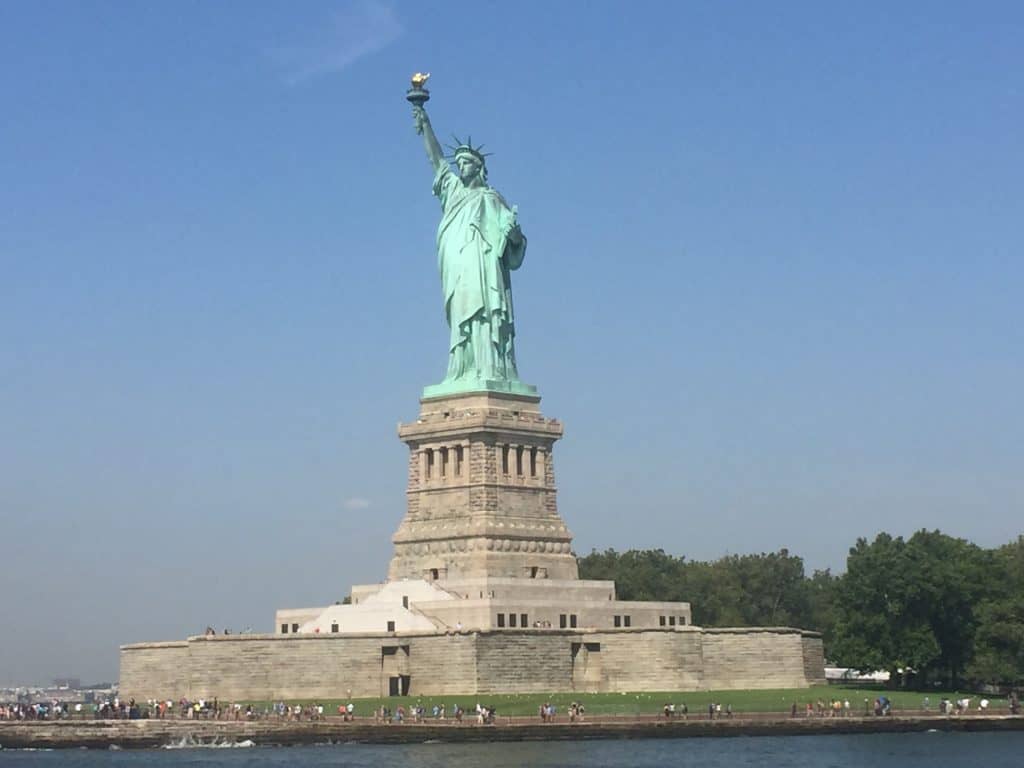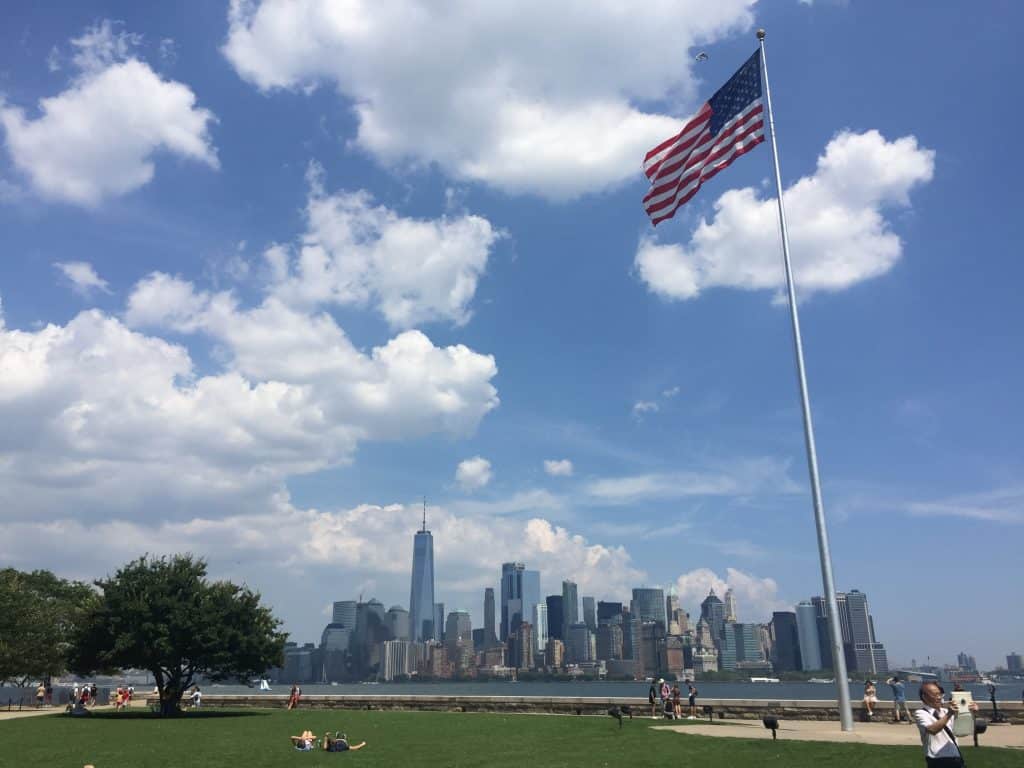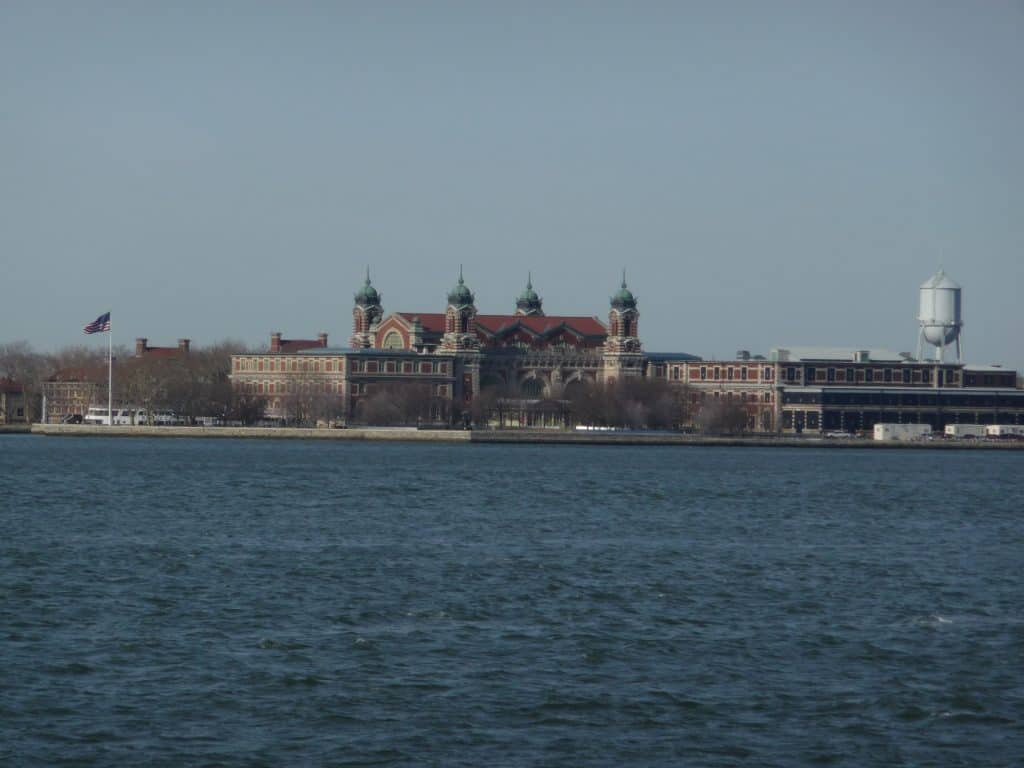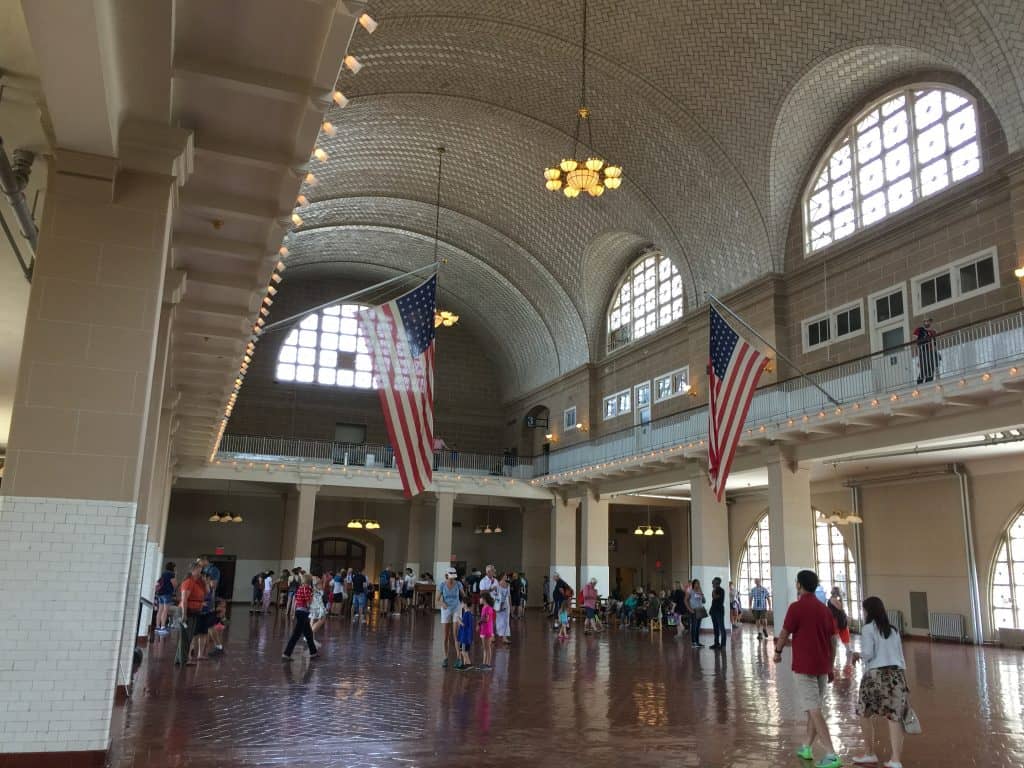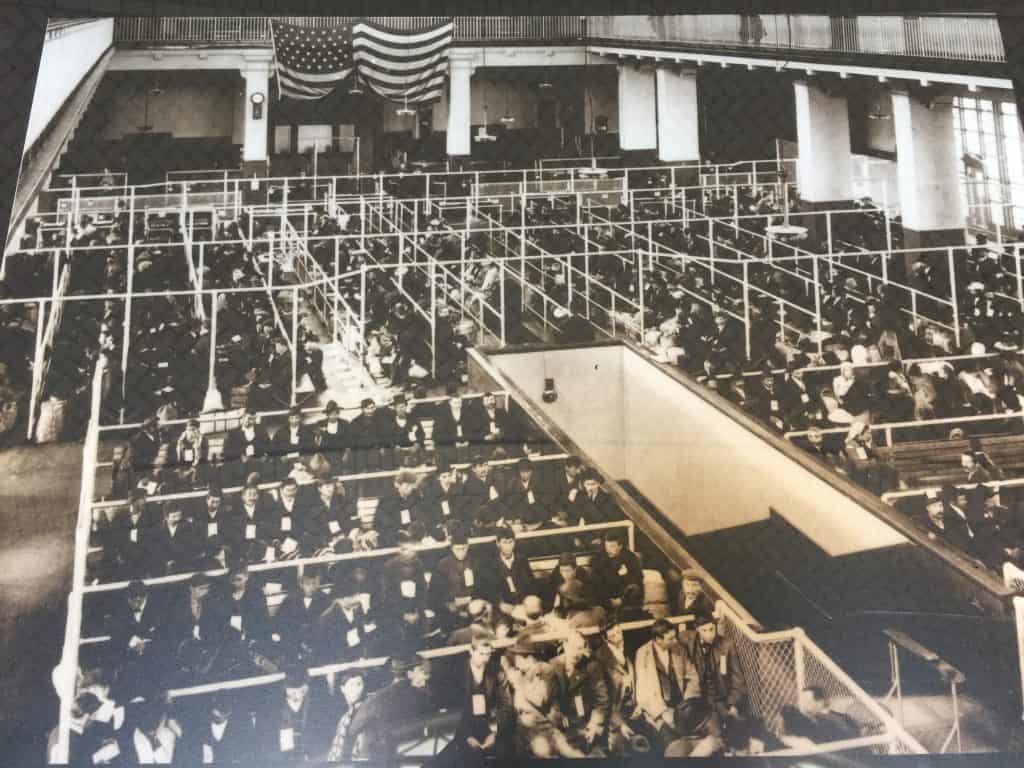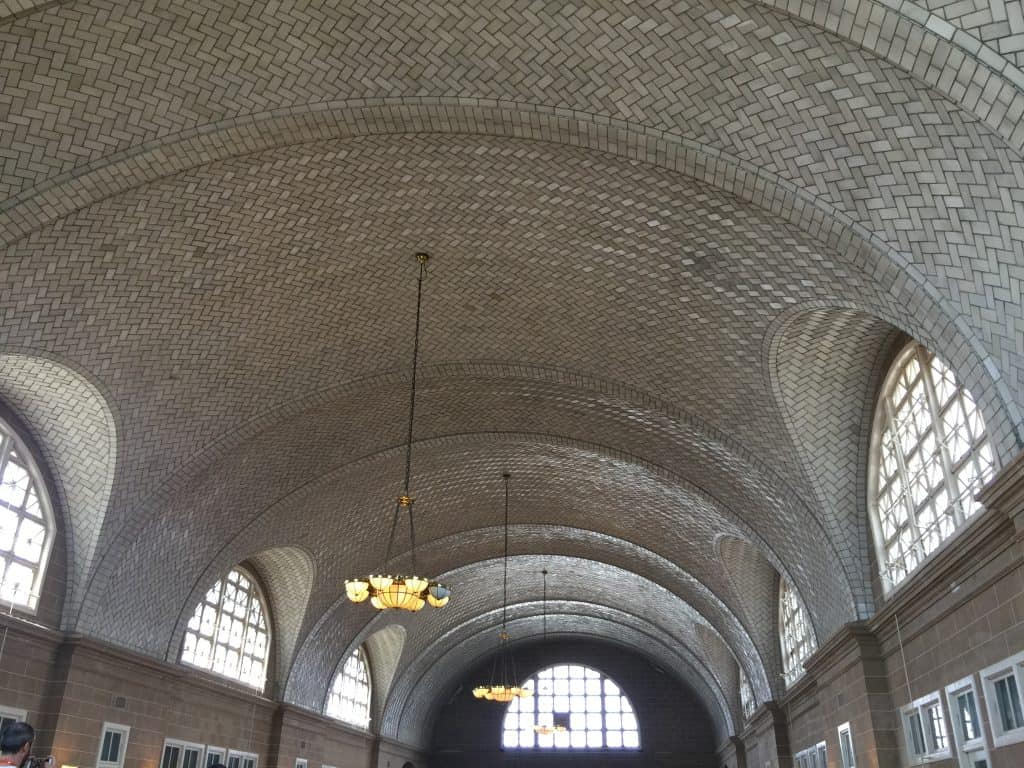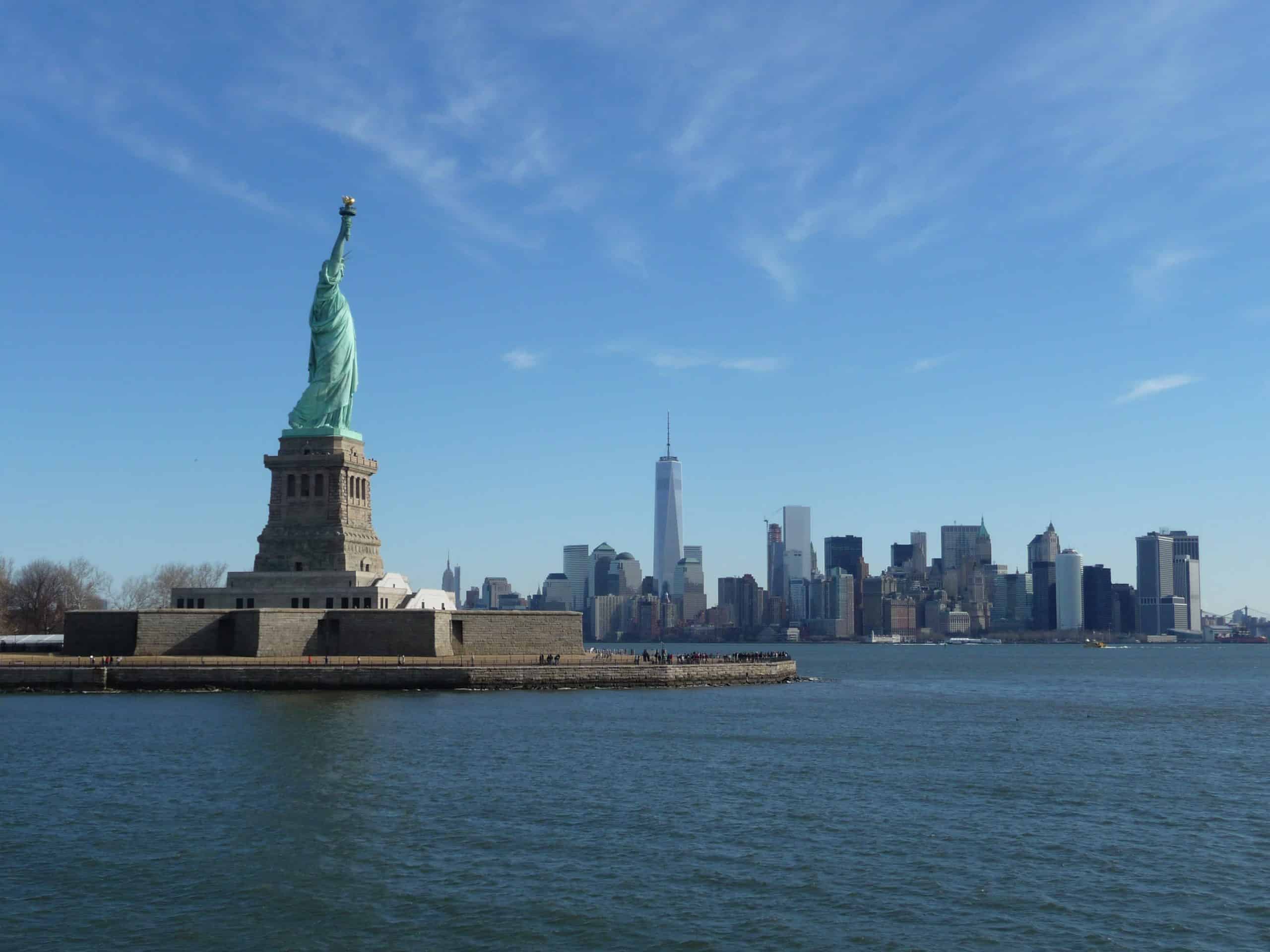
The Lady Liberty, or the Statue of Liberty, is the best-known monument in New York.
The work was designed by the French Frédéric Auguste Bertoldi and Eugène Viollet-le-Duc was initially consulted for its realization. When the last one passed away, the intervention was commissioned to Gustave Eiffel.
The structure was built in France and was transported in crates on a small ship that once arrived in New York was reassembled.
Statue of Liberty was completed in 1885 and inaugurated on 28th October 1886.
The statue is 93 meters high, representing a woman wearing a long toga and holding a torch in her right hand and a book in her left. The book bears the date of 4th July 1776, the day of American Independence.
At the feet of the woman there are symbolic broken chains and on her head she wears a seven-pointed crown, one for each sea and continent.
The statue stands on Liberty Island, at the entrance of the port on the Hudson River, in Manhattan Bay and was placed in that place because it was to be welcome to people who came from the sea.
The full name of the work is “The Freedom That Illuminates the World” and it was a gift from the people French to the United States for the centenary of the War of Independence, a symbol of the ideals of freedom and democracy.
Purchase of the boat ticket to reach Liberty Island includes access to Ellis Island with admission to the immigration museum
Ellis Island, an islet also located in front of Manhattan, is one of the most evocative and historically important places in the city of New York.
At the island is the Immigration Museum, where documents and objects are collected that tell the story of the 12 million immigrants who entered America through Ellis Island.
The port of Ellis Island, from 1894, became a sorting station for immigrants and welcomed the migratory flow from southern and eastern Europe.
Third-class passengers arrived at Ellis Island. In the large Registry Room, there are still the desks on which the inspectors sat and filed the people who had just arrived.
Here the immigrants were summarily visited and, if they were not considered in good physical condition, they were marked on the back with a plaster to be subjected to further examination.
People assessed as healthy were accompanied to the Hall of Records, where inspectors recorded them.
The building that now houses the museum was built in 1903, while the first building erected on the island was destroyed in a fire in 1897.
The museum was opened in 1990 after a long renovation.

